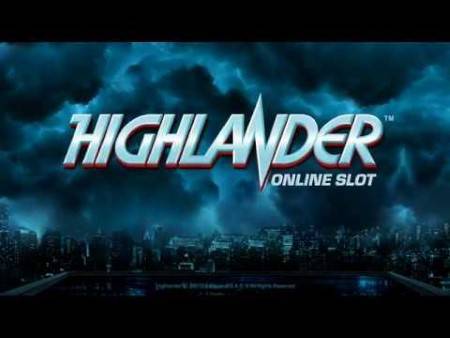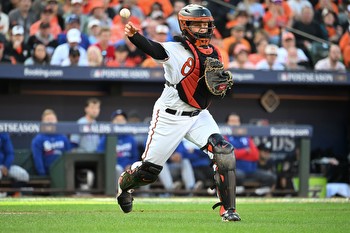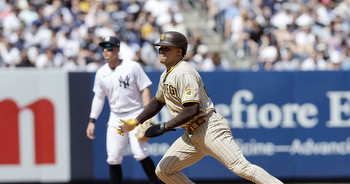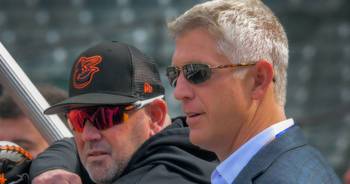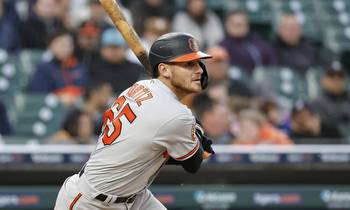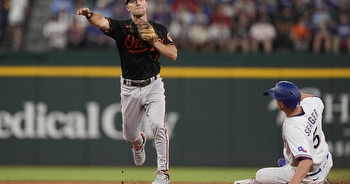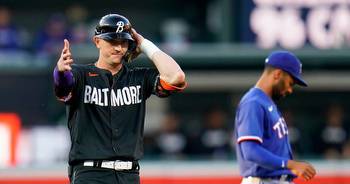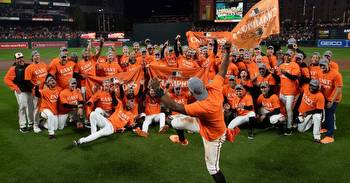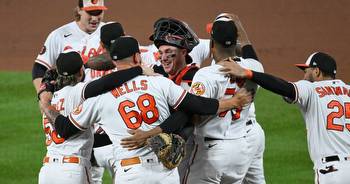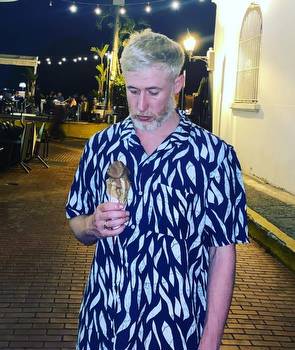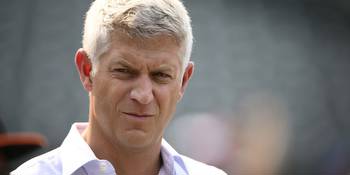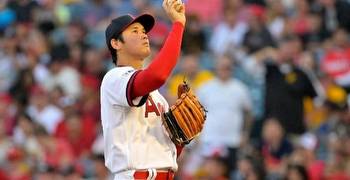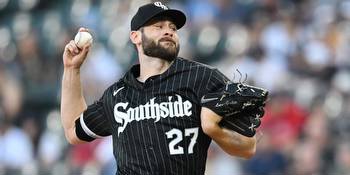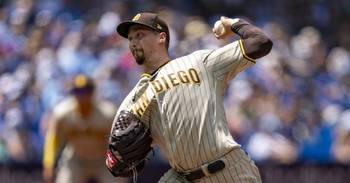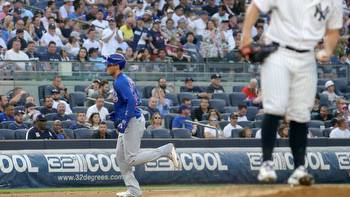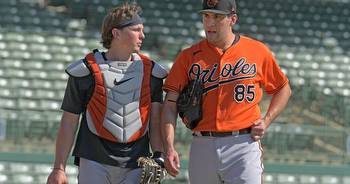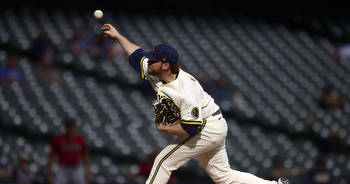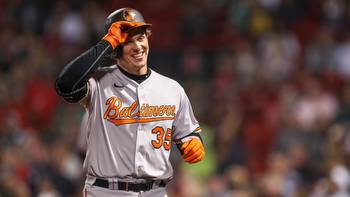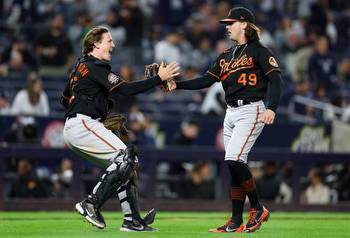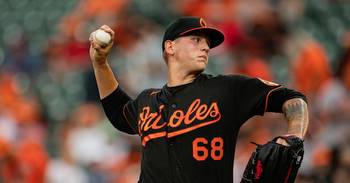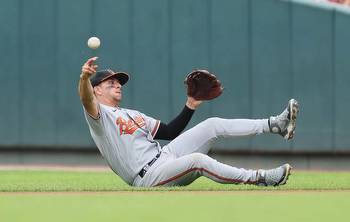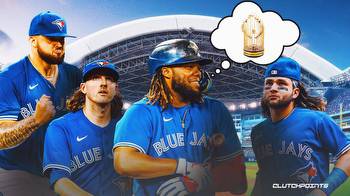Orioles roundtable: Answering the biggest questions as the MLB trade deadline approaches next week
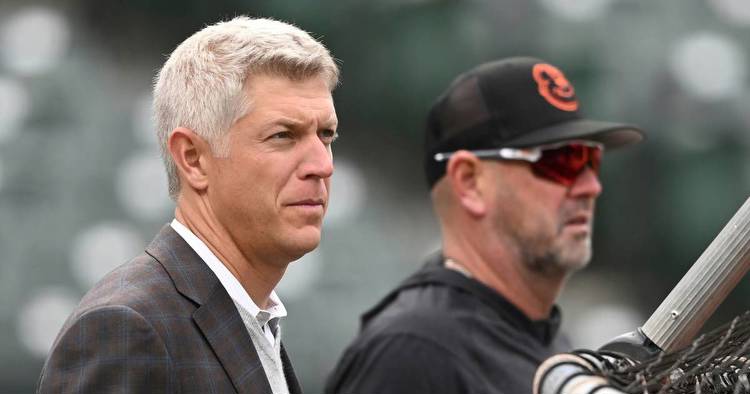
A week from now, the MLB trade deadline will have passed, and all that will stand between the Orioles and the playoffs are two months of regular-season games.
The group Baltimore attacks those two months with could feature some new faces, with the Orioles acting as buyers at this time of year for the first time since their rebuild began back in 2018. Executive vice president and general manager Mike Elias has already made one addition, acquiring reliever Shintaro Fujinami from the Oakland Athletics for minor league pitcher Easton Lucas, and the Orioles already lead the American League East, but further upgrades could help to not only secure a spot in the postseason, but also increase their chances of going deep in it.
In advance of Tuesday’s 6 p.m. trade deadline, Baltimore Sun Orioles reporters Nathan Ruiz and Jacob Calvin Meyer and sports content editor C.J. Doon answer five questions facing the team.
Ruiz: “Need” is a relative term. The current Orioles have shown how capable they are of achieving the organization’s goal for this season of reaching the playoffs — as of Tuesday morning, FanGraphs gave them almost 90% odds of doing so — but those players also are out to win the World Series. This trade deadline gives the front office the chance to show it feels the same way, and further additions, particularly for a starter to slot near the top of the rotation, would do that. Baltimore’s starters have pitched well of late, entering Tuesday with a 3.53 ERA in July that ranks fifth in the majors, but Tyler Wells, Dean Kremer and Grayson Rodriguez are within 20 frames of their personal marks. A top-of-the-rotation starter would not only make the Orioles more formidable in a playoff series, but also bolster the staff to get to the point in the season.
Meyer: No. At this point, the Orioles missing the playoffs would be a shock, and if that happens, it won’t be because they didn’t make a deadline move. But haven’t the circumstances changed now that the team owns the AL’s best record? Sure. But how many players are actually on the market who would demonstrably boost Baltimore’s odds to win the World Series (currently at 3.9% on FanGraphs)? That list can fit on one hand. The low-hanging fruit at the deadline is to assume that a splash move is better than a low-key one; or that any addition is better than none. It’s human nature to believe action is better than inaction. That doesn’t make it right. The move that would make most sense is one for an elite relief pitcher, someone to work alongside Félix Bautista and Yennier Cano to give the Orioles a terrifying trio for the final three or four innings of playoff games.
Doon: Need? I don’t think so. Should they? Probably. This is a first-place team with the chance to not only end a long postseason drought, but contend for a World Series. Given the glut of talent in the farm system, it would make sense for the Orioles to deal a few prospects for a starting pitcher and/or another reliever. As good as Tyler Wells, Kyle Bradish, Dean Kremer and Grayson Rodriguez have been at times this season, they’ve never pitched under postseason pressure. Adding a veteran starter such as Cardinals right-hander Jack Flaherty, White Sox right-hander Lucas Giolito or Tigers left-hander Eduardo Rodriguez would bolster the rotation for the stretch run.
Ruiz: Undoubtedly. There’s no player who would provide a greater boost to Baltimore’s chances of winning the 2023 World Series. Of course, with Ohtani being a pending free agent and likely to cost any acquiring team a handful of top prospects or otherwise controllable players, trading for him could hurt the Orioles’ chances for 2024 and beyond. But flags fly forever, as they say, and a World Series title in the first year of Baltimore’s fully fledged competitive window will count the same as one in its fifth year (and likely more from an economical standpoint). As far as that future is concerned, 17 of the players on the Orioles’ active 26-man roster are under team control for at least three more seasons after this one, and they have built a farm system deep enough to weather the losses required to net Ohtani while showing themselves adept enough at scouting and development to replenish it, even as they move later in drafts and less frequently add prospects by trading away their own major leaguers.
Meyer: I prefer living in the real world. In our universe, the Angels likely won’t trade Ohtani, and even if they do, the Orioles won’t be the team buying him. (Man, I’m going to eat crow when they trade for Ohtani, aren’t I?) However, I get paid to answer these questions, so here goes: Yes, they should. Ohtani is one of the few players who would significantly improve the Orioles’ World Series odds. He might be the only one. If they trade for the two-way wonder, it could even make them the AL favorite. He fits perfectly in their rotation, which has the depth to move to a six-man to match his schedule but lacks a top-line starter, and he would be the Orioles’ best hitter, too. If Elias decides the 2023 season is worth going all-in for — he won’t, and it isn’t — then Ohtani is absolutely worth going after.
Doon: It all depends on the asking price. Would parting with prospects at the level of, say, Jordan Westburg, Heston Kjerstad or Coby Mayo be worth it? That’s a tough pill to swallow for Elias, who would be sacrificing some of his top talent for a likely two-month rental — albeit for the best player in baseball. Adding Ohtani would significantly increase the Orioles’ odds of winning a title this season, but it could lead to some regret if any of those prospects pop in Los Angeles. It’s not a bet I’d be willing to make at this point of the team’s ascension.
Ruiz: Lucas Giolito. There will be plenty of bidders for Giolito, perhaps the most obvious trade candidate in the sport as a pending free agent on a bad White Sox team, but again, the Orioles have the prospect depth to manage. Giolito has made 14 starts of at least six innings, 14 starts allowing fewer than three earned runs and 11 in which he’s done both, all of which would lead Baltimore. He’s posted a 2.68 ERA in 15 starts against teams with winning records, including a 2.56 ERA with a 0.884 WHIP in five outings against the AL East’s other four teams. A deal with Chicago could also see the Orioles net another reliever, with White Sox relievers Reynaldo López, Keynan Middleton and Joe Kelly (club option) pitching on expiring contracts.
Meyer: Where is a starter going to fit into this rotation? Anyone other than Ohtani probably isn’t worth going to a six-man rotation for, considering the way that hampers the bullpen. And adding another arm into the mix likely bumps Rodriguez to the bullpen or down to Triple-A. The workload concerns for Rodriguez, Wells and Kremer are real, but Elias has already said innings limits aren’t the end-all, be-all for the organization. And navel-gazing about the negative impacts of increasing workloads can also be a self-fulfilling prophecy. Being cautious with Rodriguez, a 23-year-old former top prospect, makes sense, but Wells and Kremer are in their late-20s, aren’t recently coming off serious injuries and spent the offseason preparing to pitch more. But, to answer the question: San Diego Padres left-handed reliever Josh Hader. The Millersville native was once an Orioles prospect before the club shipped him off to the Houston Astros for starting pitcher Bud Norris in 2013. He would reinforce an already dominant back end of the bullpen, allowing manager Brandon Hyde to shorten games in the postseason. Just imagine Cano-Hader-Bautista in the seventh, eighth and ninth. Hader would also need a nickname to match Cano and Bautista.
Doon: Eduardo Rodriguez.The former Orioles farmhand is having a dominant season, posting a 2.69 ERA in 14 starts. When he visited Camden Yards in April, he took a bid for a perfect game into the seventh inning. While the 30-year-old left-hander has missed time because of an injured left index finger and can opt out of the final three years of his contract after this season, he’s perhaps the best option of the starters likely to be traded at the deadline. And hey, maybe he and the Orioles are so thrilled with the reunion that he rejoins the club this offseason.
Ruiz: That largely depends on the health of center fielder Cedric Mullins, who is on the injured list for the second time with a right groin strain. Aaron Hicks was a more-than-effective fill-in during the first stint with a .964 OPS, but he since had a .640 mark before landing on the IL himself. No. 2 prospect Colton Cowser could handle the position, but the Orioles haven’t put him into the lineup against a traditional left-handed starter (meaning non-opener) in four such games since he’s been called up. Cody Bellinger, a left-handed hitter who has hit left-handed pitching well over his career but especially this season, of the Chicago Cubs could make some sense, with the 2019 National League Most Valuable Player a pending free agent whose ability to play first base would allow for some versatility once Mullins returns.
Meyer: I agree with my esteemed colleague. The health of Mullins and Hicks will dictate this. If they’re both set to return sooner rather than later, this team doesn’t need anything offensively. But if Hicks will be out longer than 10 days, and Mullins’ recovery is expected to take longer, obtaining an outfielder — preferably a right-handed hitter — might be worth pursuing. Washington Nationals outfielder Lane Thomas could fit the bill. He hits right-handed, has experience playing all three outfield spots and is having a career year with a .293 batting average and .830 OPS. Against lefties, he’s hitting .368 with a 1.071 OPS. The hang-up with Thomas is he still has two more years of arbitration after this season, meaning he would cost more than a rental.
Doon: The emergence of Ryan O’Hearn makes designated hitter less of a priority, but given the injuries to Mullins and now Hicks, could another outfielder actually make sense? Orioles fans know Randal Grichuk all too well given his incredible career performance against Baltimore. The soon-to-be 32-year-old is batting .309 with an .850 OPS this season — albeit in hitter-friendly Colorado — and is owed a little more than $3 million the rest of the season before hitting free agency. That kind of rental could pay dividends.
Ruiz: Parting with even one of those prospects could result in a significant addition, a player who boosts their World Series chances. Baseball America’s list of the Orioles’ top 15 prospects includes groups of talented middle infielders, left-handed-hitting outfielders and intriguing pitchers in the upper minors. Pulling from any of those groups would be taking from an area of organizational strength without damaging the team’s long-term future.
Meyer: When you’ve got so many great prospects, why not? Well, that’s easy to say and harder to do. If they trade away a top 15 prospect (or two) for a player who legitimately increases their World Series odds, then the risk is worth it. But a marginal upgrade in the rotation isn’t worth giving up someone like left-hander DL Hall (No. 8 per Baseball America), outfielder Jud Fabian (No. 9) or left-hander Cade Povich (No. 10).
Doon: My guess is no. Other than Ohtani, there are not a lot of big names out there worth betting the farm for. Maybe someone such as Joey Ortiz (No. 7), Connor Norby (No. 11) or Kyle Stowers (No. 12) is part of a deal considering the amount of talent blocking their path to the majors, but I’d be pretty surprised if a highly ranked prospect such as Kjerstad, Mayo or catcher Samuel Basallo is traded away.
Orioles at Phillies
Baltimore Orioles Insider
WeeklyWant to be an Orioles Insider? The Sun has you covered. Don't miss any Orioles news, notes and info all baseball season and beyond.Wednesday, 6:05 p.m.
TV: MASN
Radio: 97.9 FM, 101.5 FM, 1090 AM
Yankees at Orioles
Friday, 7:05 p.m.
TV: MASN
Radio: 97.9 FM, 101.5 FM, 1090 AM
